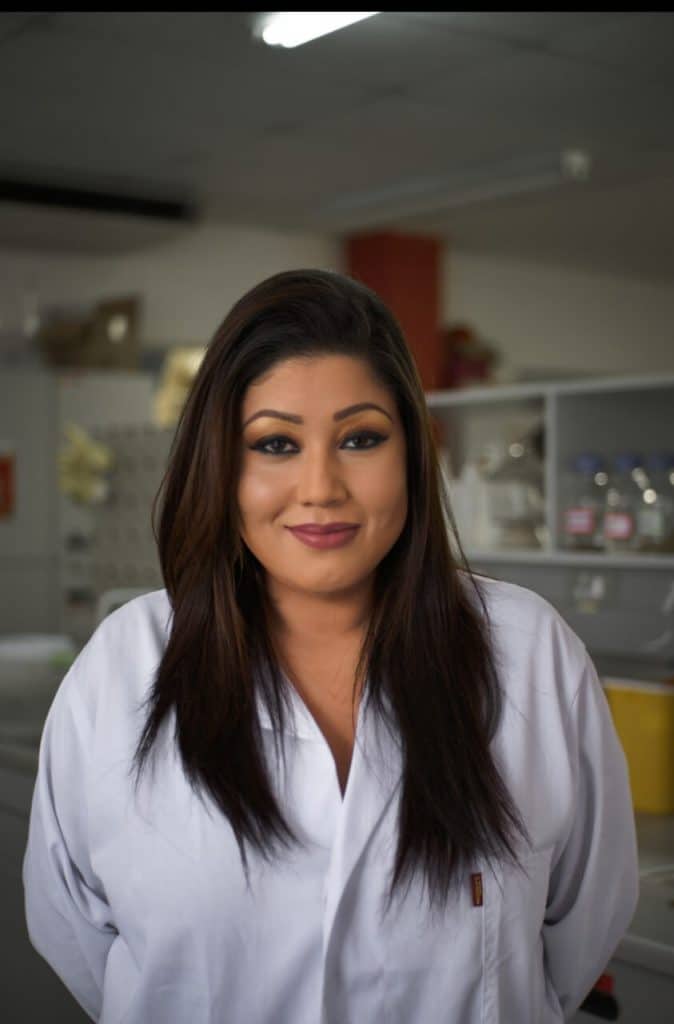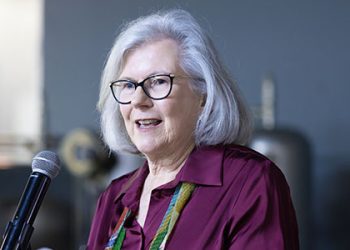Dr Rehana Malgas-Enus is just what the doctor has ordered as the world celebrates ‘International Day of Women and Girls in Science’ today. She is such a fitting inspiration for being amongst the youngest to obtain a PhD degree at the tender age of 28.
Never say –die spirit
Growing up in the Cape Flats in Mitchells Plain, her modest wish was to become a medical doctor so that she can be part of a search for a cure for cancer. This was after her aunt succumbed to the deadly ailment. But she quickly learned that medical doctors are not necessarily trained to invent new treatments for these fatal diseases and that is when she came to learn about chemistry. Although she was excellent in maths and science, her school was, like many other, under-resourced and ill-equipped to offer the prescribed laboratory experiments. This however, has never dampened her spirit and passion to become a scientist.

Enviable academic record
After she matriculated, Dr Malgas-Enus enrolled for her undergraduate degree in Chemistry (2001-2003) at the University of the Western Cape. Following this she registered for BSc (Hons) in Chemistry, University of the Western Cape. This was followed by MSc in Inorganic Synthetic Chemistry in 2005-2006 from the same institution. In 2007, she registered for a PhD in inorganic chemistry at the University of Stellenbosch (2007-2010). She then received the Naledi Pandor post-doctoral fellowship and pursued her Post-Doctoral Research at the University of Johannesburg.
Area of focus
Her area of speciality is nanomaterials, which focus on the design and application of novel organic and inorganic nanoparticles. It involves the surface engineering of metal nanoparticles for targeted application. Owing to its versatility, nanoparticle-based technologies lend themselves to a host of different applications, explained Dr Malgas-Enus.
Own research group
After completing her post-graduate studies, Dr Malgas-Enus was faced with two stark choices: to remain in academia or join industry. She opted for the former because she felt this will enable her to teach and inspire young, aspiring women scientists at grassroots level. “As a young researcher, I was able to start my own research group and to equip my lab with all the necessary equipment and chemicals, thanks to some research support from the NRF’s Thuthuka programme”, says Dr Malgas-Enus with pride.

Gender discrimination
She says the number of women scientists is comparatively low, but this is gradually changing. She says she is encouraged by government’s effort to prioritise funding for women in science. “But there are not enough women holding leadership positions at top science institutions. We still have to work hard as women to prove ourselves in an environment commonly dominated by men. Gender stereo-typing is still very much rife in our sector,” says Dr Malgas-Enus.
Keeping them intrigued and engaged
She says the International Day of Women and Girls in Science is an important platform to promote women in science and encourage young girls to pursue STEM careers. “We need to encourage more girl learners to embrace science from Grade 7-9. We have got to go younger, and keep them constantly intrigued, engaged and motivated,” she says.
What is SUNCOI?
To this end, Dr Malgas-Enus has founded The Stellenbosch University Chemistry Outreach Initiative (SUNCOI), an outreach programme that teaches the educators the ‘nuts and bolts” of chemistry. “Many under-privileged schools have no laboratory space or chemicals, however, the teachers are expected to present and assess a prescribed practical to their grades 10-12 learners. These practicals are an essential part of the learner’s assessment, so not having the infrastructure or resources to host these practicals pose a big problem to these teachers and subsequently to the learners,” says Dr Malgas-Enus.
Under-privileged schools
She says this leads to drastic decline in the number of learners in physical sciences, adding that the outreach programme enables high school learners from five under-privileged schools to complete their practicals in one of the universities fully-equipped chemistry labs. In light of the COVID-19 pandemic, she recently established LAB-M8. She says due to high school learners being unable to do their practicals at school, they have recorded the Grade 11 and Grade 12 chemistry experiments, which goes in combination with the SUNCOI practical workbooks.
Encouraging female independence
This means the learner can watch the video, extract the data, and complete their practical reports. We ensure that we only show them the necessary glassware and techniques (how to use a burette, how to make a standard solution, etc.), and we show them the results of the experiment, explains Dr Malgas-Enus. She also hopes to inspire others to also pay it forward, and to encourage especially females to be independent, and to pursue their dreams. Interested learners and teachers can follow the links below: https://www.youtube.com/watch?v=t7JtdN56xDM and https://www.youtube.com/channel/UCGHCxK_bNt1ouDAyF3U9ocw







